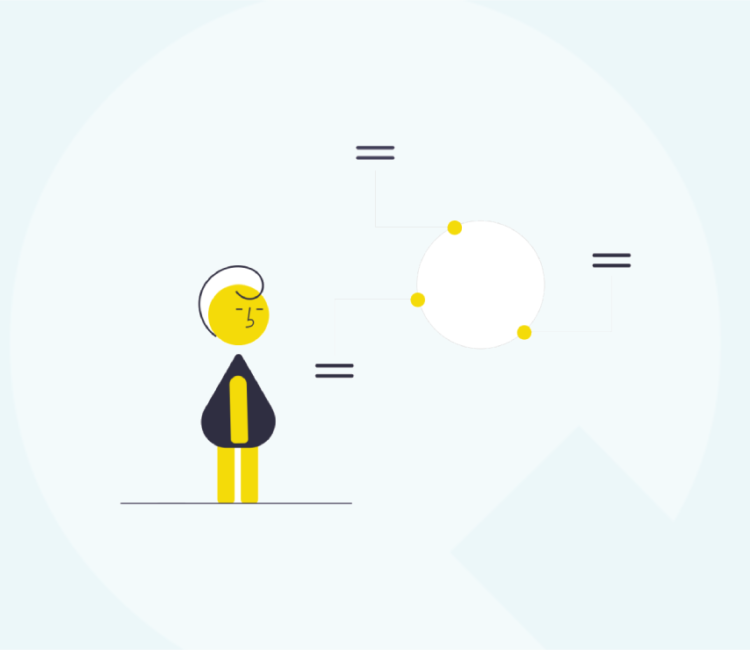Employees will inevitably have conflicts once in a while because they come from various backgrounds and have skills and experiences to put on the table.
To help you figure out what to do if you find yourself moderating for workplace conflicts, here are some steps you can take.
Clarify the source of conflict
When there’s a conflict needing to be resolved, all sorts of issues start to be brought to light. Things can become even more confusing in the heat of the moment as conflict issues start piling up one after the other. Knowing the issue can be scratching the surface, as the source of conflict can be a different story altogether.
As a mediator for a conflict between manager and employee, the first thing you need to think about would be the source of the conflict. Try and calm everyone down first so you can finally clarify what the source of conflict truly is.
Depending on the matter, there might be multiple issues ending up happening over time. However, there might be the start of all conflicts at the heart of every issue. Once you know the primary source of the conflict, it’s much easier to figure out how to solve it.
If you get too focused on the superficial issues happening, conflicts can happen again and again. Therefore, you want to get to the source of disputes not being obvious as soon as possible.
Of course, finding the source of the conflict is easier said than done, especially when both parties have strayed too far away from the real matter at hand. Therefore, you need to keep an eye out for what could potentially be the source of conflict. Talking to the people closest to the conflicting parties can help you get more information regarding what may have started a series of conflicts.
Detach from your biases
Before you can mediate any conflict, you must be as neutral and unbiased as possible. If you can’t get a genuinely neutral person to negotiate, the next thing you can do is to be self-aware. Figure out your personal biases and which people are involved in the conflict you’re most likely to side with and neutralise the feelings.

Your biases will colour your judgments of a situation, so you must learn to detach from them in some way, and the first step to do is by being aware of them. If you don’t feel you can adequately resolve the issues in an unbiased way, don’t hesitate to get another person with you to help you be better at looking at each other’s perspectives.
Aside from developing self-awareness, it is also challenging to stop our impulsive judgments because we may not be in a good headspace. Thus, making it more difficult to have the presence of mind to think things through.
Therefore, before serving as a mediator, consider applying the HALT acronym to yourself first. HALT stands for Hungry, Angry, Lonely, and Tired. By making sure of pausing and resolving your personal issues first, you make for a better and more neutral mediator of a conflict.
Talk together
You can certainly talk to the individuals one by one when resolving a conflict to get their uninterrupted sides on things. However, people will have a preference for their side of the story. Therefore, it’s still a good idea to talk things together to have a solution and resolution of the overall conflict finally.
You shouldn’t assume everything is okay if you haven’t taken the time to talk together without any interruptions. You should make sure you go through every critical point in the conflict during your talk. If you break it up into different sessions, everyone might not have the mental, physical, and emotional energy to work through it anymore.
For conflicts in your remote team, it might be harder to organise a schedule where everyone can sit down and talk to one another. However, you still shouldn’t skip this step as it is crucial to ensuring everyone is able to iron out whatever issues they have.
Schedule a meeting with those involved, both one-on-one and as a group. So even if they’re working remotely, you can still properly face the issue despite not being able to meet in person. Give yourselves a mental break afterward before following up on how each party is doing
Practice active listening
As someone who will be mediating between two different parties or more in a conflict, you need to learn to listen. When you’re resolving a dispute is not the time for you to go on a sermon and tell everybody what they’re supposed to do. Instead, you’re there to listen to everybody and get their sides of the story before making any decision.
You have to listen and not constantly interject unless there are qualifications actively. People want to feel someone is listening to their gripes, and you can serve as the neutral person through active listening.
Being an active listener allows you to get more information before proceeding with a decision. At the same time, it encourages everyone else to take a moment before cutting someone off while the person is telling their side of the story.
Taking the time to listen attentively and pausing before making a decision can make employees feel everything is being taken into consideration. So don’t feel pressure to make a decision on the spot.
Set some boundaries
In the face of a conflict, people are bound to be emotional, even when they’re in a professional space. Even the best employee can show an uglier side of themselves when caught up in emotionally distressing situations. Therefore, as a mediator for said conflict, it’s your job to give people a brief space to compose themselves before you get right down to solving the issue.
Remind everyone before you start conflict resolution about how they should keep a level head at all times once conflict resolution starts. Remind them about not getting anywhere if they react rashly. They will only harm themselves even if they are right. Ask them to keep it cool, and they are free to go to a separate room when they feel unable to relax.
Nonetheless, you should keep in mind, they might be emotional at the moment. It would be best to give every person involved some headspace.
Respect differences
One of the most significant issues and sources of conflict in the workplace can be innate differences.
Differences are especially palpable when you are managing multigenerational workforce. It’s much harder to jump over temporal differences, but you can certainly try to understand them instead. You don’t need to overcome the differences you can adapt to for both younger and older generations.
There are also such things as gender and racial differences at work which you need to acknowledge if you want conflict under control. Ignoring them will not cut it. Once you know the differences, you should learn and teach everyone else to respect these differences. Sweeping them under the rug will only make people feel suffocated and suppressed.
People are less likely to get into conflicts with a more open environment of which doesn’t shy away from getting to know and respecting these differences.
What’s extra beneficial about respecting differences in the workplace is it helps you build and improve your company culture. If you create an immediately accommodating environment on personal differences, it becomes easier for everyone to adapt to it as well.

- Image: Pexels
Don’t intimidate
You should make sure you don’t get swept up by the mood and get emotional yourself. Intimidating your employees into submission is no way to answer arisen conflicts. Instead, you’re only sweeping them under the rug, and they might crop up later. As a workplace leader, you need to have conflict resolution skills not threatening anyone directly or indirectly.
If you lead your employees by fear and resolve conflicts simply by intimidating employees into submission, no conflicts get solved. They might work fine now, but people will want to leave their workplace in the future due to a lack of a positive working environment. You’re not solving problems. You’re creating new ones.
Collaborate to find a solution
You must create a solution agreed by everyone when resolving conflicts. It is crucial when the people involved in the conflict learn to find common ground to work with and continue to work towards it after you’ve talked it over together. Hence, you need to know what everyone needs first.
Once you know what everyone needs, it becomes simpler to collaborate to find and work on a solution.
Remember, these conflicts can be deep-rooted sometimes. The solution might not be as easy to find. We suggest you be patient. Being able to talk this issue out doesn’t mean they will mend their relationship.
Sometimes, the best solution is to give the conflicting parties space. So talk to everyone involved first before forcing camaraderie between them.
Determine next steps
Different issues and conflicts have different solutions. There will be conflicts well within your powers to solve, but you shouldn’t hesitate to reach for other external help when you need to. They can help you determine what your next steps should be.
In some cases, the conflict can arise from a lack of training or performance issues. With these types of cases, it’s best to get the person under a coaching session, constant appraisals, or disciplinary actions when needed.
Once everyone has talked about the conflict and found a solution, you should create actionable steps for one another, including yourself so it isn’t everyone talking alone without backing their words up. Everyone would have no choice but to walk the talk as well.
In Summary
Following these strategies will better equip you to face conflicts in the workplace without getting flustered yourself. You’ll be a better leader, coworker, and more for everyone in the workplace. Thus, work on these strategies and keep them in mind so you can swiftly take action before a conflict turns into a more significant issue than it should be.
About the Author
Juliette Anderson is an Outreach Community Specialist for an e-commerce fulfilment company specialising in partnering with online sellers. She has worked with e-commerce stores for four years already. Her specialty lies in social media marketing and paid promotions.



